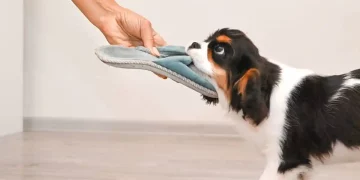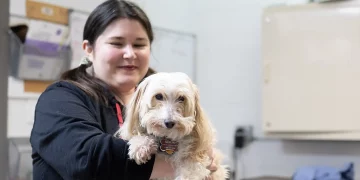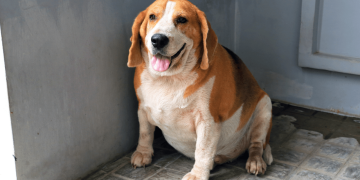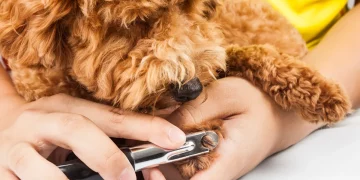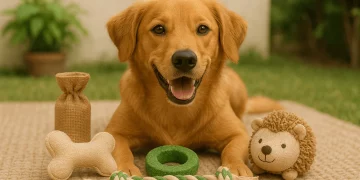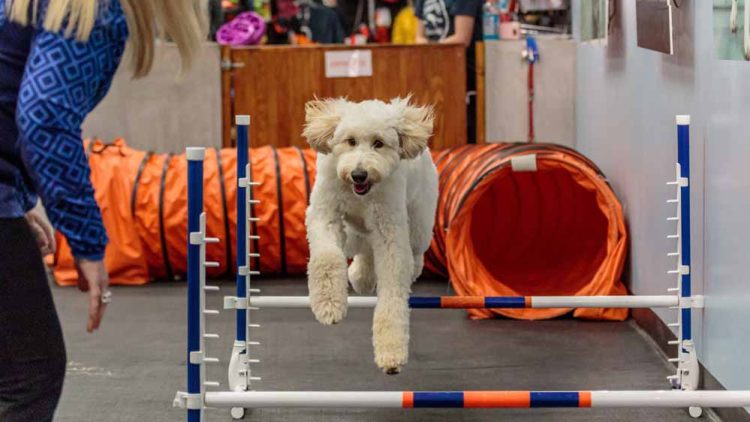Once your dog has mastered the basics of obedience, it’s time to elevate their training with more advanced commands and tricks. Not only does advanced training keep your dog mentally stimulated, but it also deepens the bond between you and your canine companion. In this guide, we will cover effective techniques for teaching complex commands and tricks, from fetching specific items to more impressive behaviors like playing dead or learning to dance. Whether you want to show off your dog’s abilities or simply challenge their mind, advanced training is an enriching experience for both you and your dog.
1. Setting the Foundation for Advanced Training
Before diving into complex commands and tricks, ensure that your dog has mastered the basics of obedience. A strong foundation in basic commands such as sit, stay, come, and heel is essential for success in advanced training. If your dog still struggles with these foundational commands, it’s best to go back to the basics before progressing to more advanced tasks.
1.1. Consistency Is Key
Advanced training requires consistency in commands, rewards, and practice. Dogs learn best when they can predict what will happen next, so maintain a routine during training sessions.
1.2. Short, Engaging Training Sessions
Keep training sessions brief and engaging. Aiming for 10 to 15 minutes per session is ideal, as dogs have limited attention spans. Always finish a session on a positive note with praise or a reward to keep your dog motivated for the next training.
2. Teaching Advanced Commands
Once your dog has the basics down, you can start introducing advanced commands. These may include useful behaviors, like retrieving specific items, or fun tricks that show off their intelligence.
2.1. Fetch Specific Items
Teaching your dog to fetch specific items is a highly practical and fun command. Here’s how to train your dog to bring you a designated item, such as the remote control or your slippers.
Step-by-Step Guide:
- Start with a Familiar Item: Choose an object your dog is already interested in, like a favorite toy.
- Introduce the Command: Say a specific cue, such as “fetch the remote,” while pointing at the item.
- Reward the Action: When your dog picks up the item, praise them immediately and offer a treat.
- Add Complexity: Gradually increase the complexity of the task by moving the object to different locations or using new items. Always reward them when they bring the right item.
2.2. Heel with Precision
Heel is a basic command, but training your dog to walk with precision beside you, without pulling on the leash, is an advanced skill that takes time. You can teach your dog to heel not just on walks, but also in different settings.
Step-by-Step Guide:
- Start in a Distraction-Free Area: Begin training in a quiet place where there are minimal distractions.
- Use Positive Reinforcement: Hold a treat in your left hand (assuming you’re training your dog to heel on the left side) and encourage your dog to stay close to your side while walking.
- Short Leash and Consistent Pace: Keep the leash short but not tight, and walk at a consistent pace.
- Reinforce the Behavior: Reward your dog frequently when they are walking nicely by your side. Over time, add distractions such as other people or dogs.
2.3. Place Command
The “place” command teaches your dog to go to a designated spot, like a bed or mat, and stay there until you release them. This command is useful when you want your dog to stay in one spot, such as when guests arrive at your home or when you’re eating.
Step-by-Step Guide:
- Use a Visual Cue: Point to the mat or bed and say “place” in a calm, firm voice.
- Guide Your Dog: Gently guide your dog to the designated spot, rewarding them when they lie down.
- Increase Duration: Gradually extend the amount of time your dog stays on the mat, using praise and treats as reinforcement.
- Release Command: Teach your dog a release word, such as “okay,” to let them know when they can leave the mat.

3. Teaching Fun Tricks
Beyond useful commands, teaching your dog fun tricks is a great way to challenge them mentally and impress your friends. Here are a few tricks that can be taught with patience and persistence.
3.1. Play Dead (Roll Over)
The “play dead” trick is a classic and a crowd favorite. It’s a fun way to showcase your dog’s intelligence and coordination.
Step-by-Step Guide:
- Start with Roll Over: Begin by teaching your dog to roll over. To do this, have your dog lie down and gently guide them into a roll using a treat.
- Introduce the Cue: Once your dog is rolling over reliably, introduce a verbal cue like “bang” or “play dead” as they perform the roll.
- Add Drama: Once your dog rolls over, gently guide them into staying on their back with their paws in the air to mimic playing dead. Reward them with treats when they hold the position.
- Increase Duration: Gradually increase the duration of the “play dead” position and reinforce the behavior.
3.2. Spin in a Circle
Teaching your dog to spin in a circle is another fun trick that is easy to teach with the right techniques.
Step-by-Step Guide:
- Get Your Dog’s Attention: Hold a treat near your dog’s nose and move it in a circular motion.
- Introduce the Command: As your dog follows the treat and spins in a circle, introduce a verbal cue like “spin.”
- Reward the Behavior: Once your dog completes the spin, reward them with the treat.
- Repeat and Build Consistency: Practice the trick multiple times in each session to ensure your dog can spin reliably on command.
3.3. Dance with Your Dog
Dancing with your dog, or teaching them to stand on their hind legs and “dance,” is a cute and impressive trick.
Step-by-Step Guide:
- Lure Your Dog: Hold a treat just above your dog’s head to encourage them to lift up on their hind legs.
- Introduce the Cue: Once your dog is standing on their hind legs, say a verbal cue like “dance.”
- Reward the Position: Give your dog a treat and praise them when they hold the position for a few seconds.
- Increase Duration: Over time, encourage your dog to “dance” for longer periods, gradually adding more complex movements.
4. Troubleshooting Common Training Issues
Training advanced commands and tricks can sometimes result in frustrations. If your dog is not picking up on a command or is distracted, don’t panic. Here are a few tips to troubleshoot common training issues.
4.1. Lack of Focus
If your dog is distracted and not focusing on the task at hand, try practicing in a quieter space with fewer distractions. Gradually reintroduce distractions as your dog becomes more proficient at the command.
4.2. Inconsistent Responses
If your dog is inconsistent with their responses, it may be due to a lack of repetition or reward. Reinforce the desired behavior consistently and be patient. Avoid giving treats unless the behavior is executed correctly.
4.3. Frustration or Resistance
If your dog becomes frustrated or shows resistance to training, take a break. Dogs may need time to absorb the new information, and pushing too hard can lead to burnout. Keep sessions light and fun, using positive reinforcement to encourage progress.
5. Keeping Your Dog Mentally Stimulated
Advanced training is not only about learning commands but also about keeping your dog mentally sharp. Dogs, especially intelligent breeds, thrive on mental stimulation. Try incorporating puzzle toys, scent games, and obstacle courses into your dog’s routine to continue challenging their mind.
6. Conclusion: Celebrating Your Dog’s Achievements
Advanced training is an ongoing journey that requires patience, persistence, and plenty of positive reinforcement. Whether you’re teaching your dog practical commands, impressive tricks, or fun behaviors, the key is to make training enjoyable for both you and your dog. Each achievement, no matter how small, strengthens your bond and enhances your dog’s overall well-being. Celebrate the progress your dog makes, and remember that the goal is to build a trusting, loving relationship while helping your dog become the best version of themselves.


